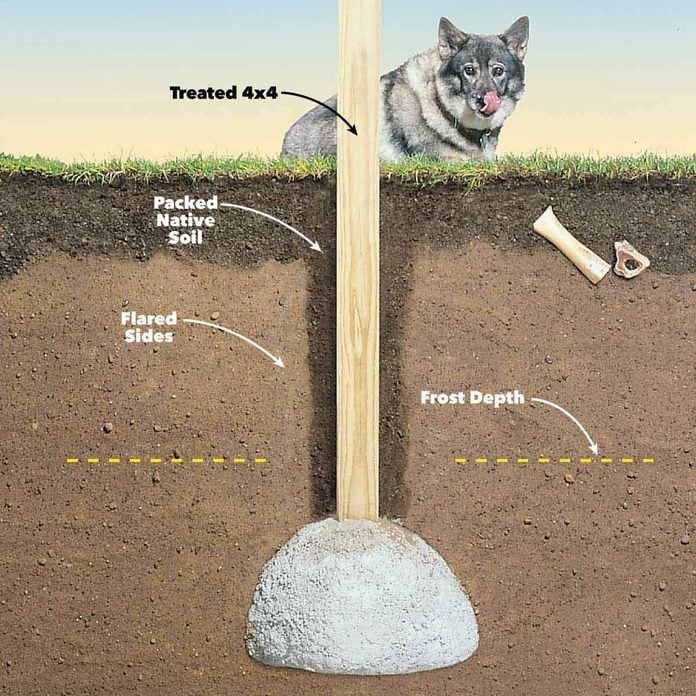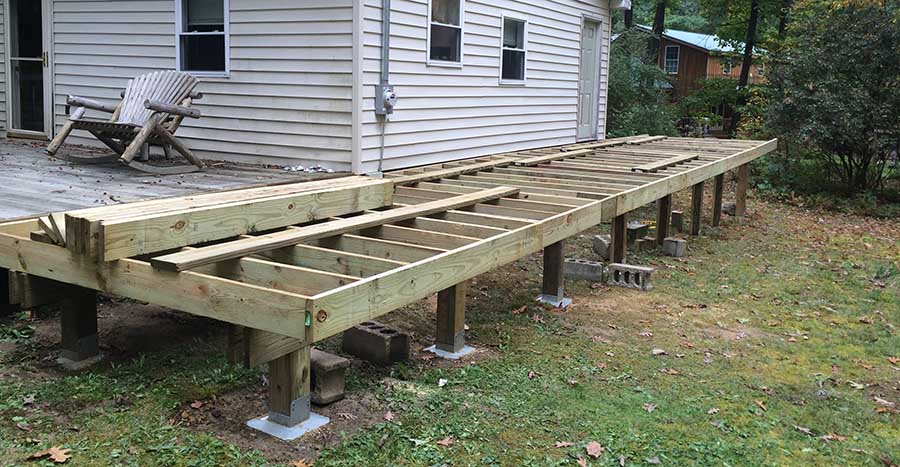Deck Footings Demystified: Your Plan for a Safe, Lasting Outdoor Place
Deck Footings Demystified: Your Plan for a Safe, Lasting Outdoor Place
Blog Article
Specialist Tips for Putting Up Deck Footings to Support Your Outdoor Space
When it comes to building a deck, one of the most critical aspects to consider is the installation of appropriate grounds. These footings are the structure upon which your outside area will rest, providing stability and support for years to come. What exactly does it take to set up deck grounds appropriately?
Relevance of Correct Deck Footings
Appropriate deck footings are important for making sure the stability and durability of your outdoor area. When building a deck, it is crucial to focus on the structure on which it will rest. Deck grounds supply the essential support for the whole structure and aid disperse the weight evenly - Deck Footings. Without solid and correctly set up grounds, your deck might become unstable, resulting in safety and security hazards and expensive fixings.

Along with security, proper deck grounds likewise add to the long life of your exterior room (Deck Footings). Footings that are made and constructed to endure the components and soil problems in your area will assist protect against the deck from moving or working out in time. By guaranteeing the footings are appropriately sized and set up, you can decrease the threat of damages to the deck framework, expanding its lifespan and decreasing the need for expensive repair work or substitutes

Choosing the Right Kind of Grounds
When picking the appropriate kind of grounds for your deck, it is necessary to take into consideration elements such as soil conditions, local building regulations, and the total layout of your outside space. The sort of footing you pick will play a vital function in ensuring the stability and longevity of your deck.
One common kind of footing is the concrete footing. Concrete grounds appropriate for the majority of soil conditions and provide outstanding support for decks. They are generally set up below the frost line to stop changing and settling because of freezing and thawing cycles. Another option is helical piers, which are suitable for areas with unstable dirt or high water tables. These piers are screwed right into the ground and provide strong support for the deck.
In some situations, you might need to make use of specific footings, such as stack grounds or deep foundations, if you are developing a multi-level or big deck. These footings are designed to distribute the weight of the deck over a bigger area, making certain stability and stopping working out or sinking.
Before picking a sort of footing, it is vital to seek advice from local structure codes and guidelines to make sure compliance. In addition, think about the style and planned use of your outdoor area. Elements such as the size, form, and load-bearing demands of your deck will affect the sort of footing that is most appropriate.
Preparing the Ground for Footing Installation
To properly prepare the ground for footing installment, it is necessary to examine the soil conditions and take needed steps to ensure stability and resilience of the deck. The very first step is to excavate the location where the footings will be mounted. The depth of the excavation will certainly depend on the frost line in your area and the details demands of the deck layout. It is necessary to eliminate any kind of plant life, rocks, or debris from the excavation to ensure a solid structure.
Once the location has actually been excavated, the next action is to portable the soil. This can be done utilizing a plate compactor or by using a hand tamper. Condensing the dirt aids to eliminate any type of gaps or air pockets, which can lead to clearing up and instability in time.
After condensing the soil, it is necessary to lay a layer of gravel or smashed rock at the base of the excavation. This will offer drain and aid to prevent water from pooling around the footings, which can cause disintegration and instability.
Step-by-Step Overview to Setting Up Deck Footings
After effectively preparing the ground for footing installment, the following step is to begin the process of installing deck grounds. This step-by-step guide will offer you with a clear understanding of just how to mount deck grounds for your outdoor space.
Determine the place: Begin by noting the settings of the deck footings utilizing risks and string. Ensure that the locations align with the design and layout of your deck.
Dig the holes: Utilize an article opening miner or an auger to dig the holes for the grounds. The depth and size of the openings need to remain in conformity with local building codes and the specific requirements of your deck design.
Degree the openings: Use a degree to make certain that the openings are dug to the appropriate depth and are level with each other. (Deck Footings)
Add crushed rock: Area a layer of gravel at the base of each opening to enhance drain and prevent the timber from decomposing.
Put the footings: Place the grounds right into the openings, making certain they are level and plumb. Make use of a degree and a see it here measuring tape to make certain precision.
Protect the footings: Put concrete right into the openings around the grounds, filling them to the top. Make use of a post degree to ensure the footings continue to be level as the concrete sets.
Allow time for curing: Allow the concrete remedy according to the producer's guidelines before continuing with the deck building.
Typical Blunders to Stay Clear Of Throughout Footing Setup
One vital element to consider during the installation of deck footings is avoiding usual mistakes that can compromise the security and longevity of your outdoor area. While deck grounds might seem like a simple and simple component of the building process, neglecting specific elements can bring about costly repair work and prospective safety and security risks down the line.

In addition, overlooking to install proper drainage measures can cause water to collect around the footings, causing rot, decay, and the eventual weakening of the deck's foundation. Using the incorrect kind of footing material or falling short to sufficiently safeguard the grounds can endanger their structural honesty.
To avoid these errors, it is vital to seek advice from with a professional or follow industry guidelines to guarantee proper footing installation. By doing so, you can ensure the stability and longevity of your exterior area, offering a secure and enjoyable setting for years to come.
Verdict
Finally, mounting correct deck footings is crucial for the stability and durability of your exterior area. By picking the best kind of grounds and adequately preparing the ground, you can ensure a solid foundation for your deck. Complying with a step-by-step overview and staying clear of common blunders during footing setup will additionally improve the longevity and safety of your deck.
Correct deck grounds are essential for making sure the stability and longevity of your outdoor area. The grounds offer as a connection in between the ground and the deck, enabling the weight of the deck useful link and its owners to be spread uniformly right into the soil.One usual kind of ground is the concrete footing. Insert the grounds: Put the footings into the holes, making sure they are degree and plumb. Protect the footings: Put concrete into the holes around the footings, filling them to the top.
Report this page